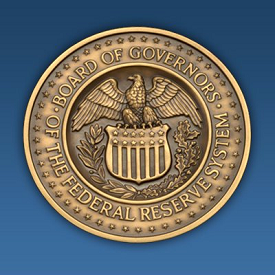 The Federal Open Market Committee met in November to indicate that the “labor market has continued to strengthen and that economic activity has been expanding at a moderate pace since mid-year.”
The Federal Open Market Committee met in November to indicate that the “labor market has continued to strengthen and that economic activity has been expanding at a moderate pace since mid-year.”
The committee expects inflation to rise to 2 percent over the medium term and in doing so, the Committee decided to raise the target range for the federal funds rate to 1/2 to 3/4 percent (essentially 0.25%+). Keep in mind that this is the second time in ten years that the Fed rate increased (last being in December of last year) and there could be more expected rate hikes within a given next year.
Fed Chair Janet Yellen made her distinctions based on three things: The slight downward revision for future unemployment rate, slight upward revision of the future inflation rate, and anticipated chance in next year’s fiscal policy. Now, in an immediate response towards this situation, it’s advised that you read on to further better your knowledge on how to protect your assets.
Credit Cards & Fed Rates:
With a increase in the Fed Rate, essentially, you would notice big lenders doing the same with their interest rates. It’s recommended that you pay off your balance in full rather than raking up excessive interest rates. If you do have an existing form of credit card debt then there’s a big chance that the interest rate on the card is variable and changes will be based on the prime rate. You should expect the APR on your credit cards to increae by 0.25% as the prime rate increases. The biggest advice I can give is to not make any purchases that you knowingly cannot afford to pay in full.
Bank Accounts & Fed Rates:
Now, assuming enough, since bank accounts do not have a interest rate tied to a prime rate it’s more likely that individual financial institutions will increase rates as they see befitting. You should expect savings accounts to pay more with a little more interest on savings account deposits. Definitely beneficial for those who currently have their hands on a high interest savings account, but patience is key! If you are able to find a higher interest rewards checking account then that would be quite beneficial as well and could prove better than a high-interest savings depending on the rate. Now looking at this long term… this incremental Fed Rate increase may just be a slap on the wrist for Americans, but there could be more to come out of it; Unemployment rate is at an all-time low while stocks, bonds and housing prices are at a all-time high on top of a 10-15 trillion dollars in debt; inflation is bound to happen and the purpose of a 1% Savings account is emergency funds.
Conclusion:
Analyzing this with the most precaution possible, the federal funds rate is going to increase to 1/2 to 3/4 percent. Now, one hike like this wouldn’t have much of an effect however, the Fed Rates is expected to hike again in the near 1-3 years and it’s best to prepare ourselves. Considering that this is the second time in 10 years (besides December of 2015) that the Fed Rate increased… This pressures economist to sway towards a possible inflation in the near future. Two vacancies should be filled in the Fed’s Board of Governors in early 2017 and the new FOMC members will most likely be ‘hawkish’. Keep in mind that this rate hike is definitely wrong timing with interest on a 10-year US Treasury bond going up and mortgage rates being closely tied to the 10-year note; the yield is expected to increase rapidly by approx. 0.7% since the election.
